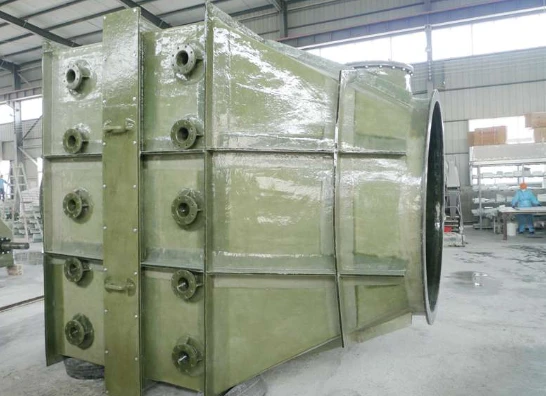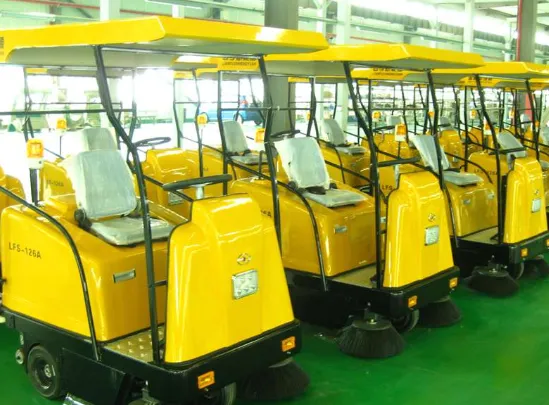
-
 Afrikaans
Afrikaans -
 Albanian
Albanian -
 Amharic
Amharic -
 Arabic
Arabic -
 Armenian
Armenian -
 Azerbaijani
Azerbaijani -
 Basque
Basque -
 Belarusian
Belarusian -
 Bengali
Bengali -
 Bosnian
Bosnian -
 Bulgarian
Bulgarian -
 Catalan
Catalan -
 Cebuano
Cebuano -
 China
China -
 China (Taiwan)
China (Taiwan) -
 Corsican
Corsican -
 Croatian
Croatian -
 Czech
Czech -
 Danish
Danish -
 Dutch
Dutch -
 English
English -
 Esperanto
Esperanto -
 Estonian
Estonian -
 Finnish
Finnish -
 French
French -
 Frisian
Frisian -
 Galician
Galician -
 Georgian
Georgian -
 German
German -
 Greek
Greek -
 Gujarati
Gujarati -
 Haitian Creole
Haitian Creole -
 hausa
hausa -
 hawaiian
hawaiian -
 Hebrew
Hebrew -
 Hindi
Hindi -
 Miao
Miao -
 Hungarian
Hungarian -
 Icelandic
Icelandic -
 igbo
igbo -
 Indonesian
Indonesian -
 irish
irish -
 Italian
Italian -
 Japanese
Japanese -
 Javanese
Javanese -
 Kannada
Kannada -
 kazakh
kazakh -
 Khmer
Khmer -
 Rwandese
Rwandese -
 Korean
Korean -
 Kurdish
Kurdish -
 Kyrgyz
Kyrgyz -
 Lao
Lao -
 Latin
Latin -
 Latvian
Latvian -
 Lithuanian
Lithuanian -
 Luxembourgish
Luxembourgish -
 Macedonian
Macedonian -
 Malgashi
Malgashi -
 Malay
Malay -
 Malayalam
Malayalam -
 Maltese
Maltese -
 Maori
Maori -
 Marathi
Marathi -
 Mongolian
Mongolian -
 Myanmar
Myanmar -
 Nepali
Nepali -
 Norwegian
Norwegian -
 Norwegian
Norwegian -
 Occitan
Occitan -
 Pashto
Pashto -
 Persian
Persian -
 Polish
Polish -
 Portuguese
Portuguese -
 Punjabi
Punjabi -
 Romanian
Romanian -
 Russian
Russian -
 Samoan
Samoan -
 Scottish Gaelic
Scottish Gaelic -
 Serbian
Serbian -
 Sesotho
Sesotho -
 Shona
Shona -
 Sindhi
Sindhi -
 Sinhala
Sinhala -
 Slovak
Slovak -
 Slovenian
Slovenian -
 Somali
Somali -
 Spanish
Spanish -
 Sundanese
Sundanese -
 Swahili
Swahili -
 Swedish
Swedish -
 Tagalog
Tagalog -
 Tajik
Tajik -
 Tamil
Tamil -
 Tatar
Tatar -
 Telugu
Telugu -
 Thai
Thai -
 Turkish
Turkish -
 Turkmen
Turkmen -
 Ukrainian
Ukrainian -
 Urdu
Urdu -
 Uighur
Uighur -
 Uzbek
Uzbek -
 Vietnamese
Vietnamese -
 Welsh
Welsh -
 Bantu
Bantu -
 Yiddish
Yiddish -
 Yoruba
Yoruba -
 Zulu
Zulu
Jan . 24, 2025 01:49
Back to list
fiberglass ducts demonstrate exceptional resistance against ...
Fiberglass ducts showcase an exceptional resistance to a variety of environmental and operational challenges, making them a preferred choice for many HVAC installations. A cornerstone of this resistance is their ability to withstand moisture, chemicals, and extreme temperature fluctuations, which underscores the reliability and durability of these materials in various applications.
From an expertise standpoint, HVAC professionals favor fiberglass ducts not only for their physical properties but also for their ease of installation and maintenance. The lightweight nature of fiberglass simplifies handling and installation compared to heavier metal ductwork, reducing labor time and costs. Furthermore, their insulated structures provide superior thermal efficiency, reducing energy consumption and promoting environmental sustainability. This efficiency aligns with current trends towards energy conservation and greener building designs, supporting both residential users looking to cut down on utility bills and commercial establishments striving to meet sustainability goals. Authoritative sources in the HVAC industry frequently highlight fiberglass ducts for their contributions to energy efficiency and indoor air quality improvement. Studies and reports often cite that the use of fiberglass in air distribution systems leads to a reduction in thermal gains and losses, helping maintain desired indoor temperatures with less energy—a vital advantage in today’s energy-conscious society. Additionally, industry certifications and standards, such as those set by the American Society of Heating, Refrigerating and Air-Conditioning Engineers (ASHRAE), often recognize fiberglass duct systems as compliant solutions that meet rigorous performance and safety criteria. Trustworthiness in fiberglass duct implementations is frequently evidenced through their consistent track record of performance across diverse sectors such as healthcare, pharmaceuticals, food processing, and education. Decision-makers in these fields prioritize materials that guarantee air purity and system reliability, making fiberglass a go-to choice. Testimonials from facility managers and HVAC professionals reinforce the dependable nature of fiberglass ducts, highlighting their minimal maintenance requirements and long-term cost benefits. In conclusion, fiberglass ducts present an impressive profile characterized by resistance to moisture, chemicals, and temperature fluctuations. Their advantageous properties extend beyond simple resilience; they offer energy efficiency, easy installation, and enhanced indoor air quality, marking them as a solution that blends performance with practicality. For HVAC professionals and facility managers, the adoption of fiberglass ducts represents a strategic investment in sustainability, reliability, and cost-effectiveness, making them an invaluable component in modern air handling solutions. As industries continue to evolve and prioritize eco-friendly and efficient infrastructures, fiberglass ducts remain at the forefront, proving their worth in challenging environments across the globe.


From an expertise standpoint, HVAC professionals favor fiberglass ducts not only for their physical properties but also for their ease of installation and maintenance. The lightweight nature of fiberglass simplifies handling and installation compared to heavier metal ductwork, reducing labor time and costs. Furthermore, their insulated structures provide superior thermal efficiency, reducing energy consumption and promoting environmental sustainability. This efficiency aligns with current trends towards energy conservation and greener building designs, supporting both residential users looking to cut down on utility bills and commercial establishments striving to meet sustainability goals. Authoritative sources in the HVAC industry frequently highlight fiberglass ducts for their contributions to energy efficiency and indoor air quality improvement. Studies and reports often cite that the use of fiberglass in air distribution systems leads to a reduction in thermal gains and losses, helping maintain desired indoor temperatures with less energy—a vital advantage in today’s energy-conscious society. Additionally, industry certifications and standards, such as those set by the American Society of Heating, Refrigerating and Air-Conditioning Engineers (ASHRAE), often recognize fiberglass duct systems as compliant solutions that meet rigorous performance and safety criteria. Trustworthiness in fiberglass duct implementations is frequently evidenced through their consistent track record of performance across diverse sectors such as healthcare, pharmaceuticals, food processing, and education. Decision-makers in these fields prioritize materials that guarantee air purity and system reliability, making fiberglass a go-to choice. Testimonials from facility managers and HVAC professionals reinforce the dependable nature of fiberglass ducts, highlighting their minimal maintenance requirements and long-term cost benefits. In conclusion, fiberglass ducts present an impressive profile characterized by resistance to moisture, chemicals, and temperature fluctuations. Their advantageous properties extend beyond simple resilience; they offer energy efficiency, easy installation, and enhanced indoor air quality, marking them as a solution that blends performance with practicality. For HVAC professionals and facility managers, the adoption of fiberglass ducts represents a strategic investment in sustainability, reliability, and cost-effectiveness, making them an invaluable component in modern air handling solutions. As industries continue to evolve and prioritize eco-friendly and efficient infrastructures, fiberglass ducts remain at the forefront, proving their worth in challenging environments across the globe.
Related Products
Latest news
-
Exploring the Benefits of Top Hammer Drifter Rods for Enhanced Drilling PerformanceNewsJun.10,2025
-
High-Precision Fiberglass Winding Machine for GRP/FRP Pipe Production – Reliable & Efficient SolutionsNewsJun.10,2025
-
FRP Pipes & Fittings for Shipbuilding - Corrosion-Resistant & LightweightNewsJun.09,2025
-
Premium FRP Flooring Solutions Durable & Slip-ResistantNewsJun.09,2025
-
Premium Fiberglass Rectangular Tanks Durable & Lightweight SolutionNewsJun.09,2025
-
Tapered Drill String Design Guide Durable Performance & UsesNewsJun.09,2025









